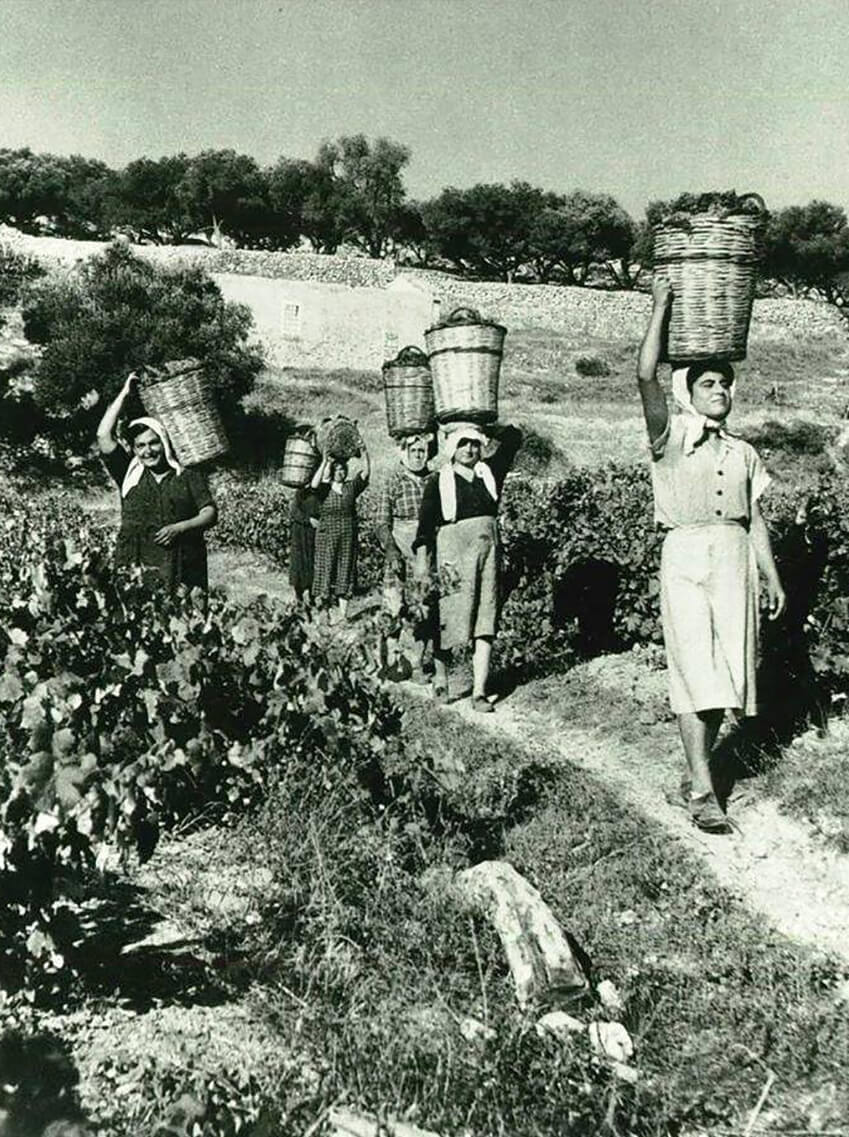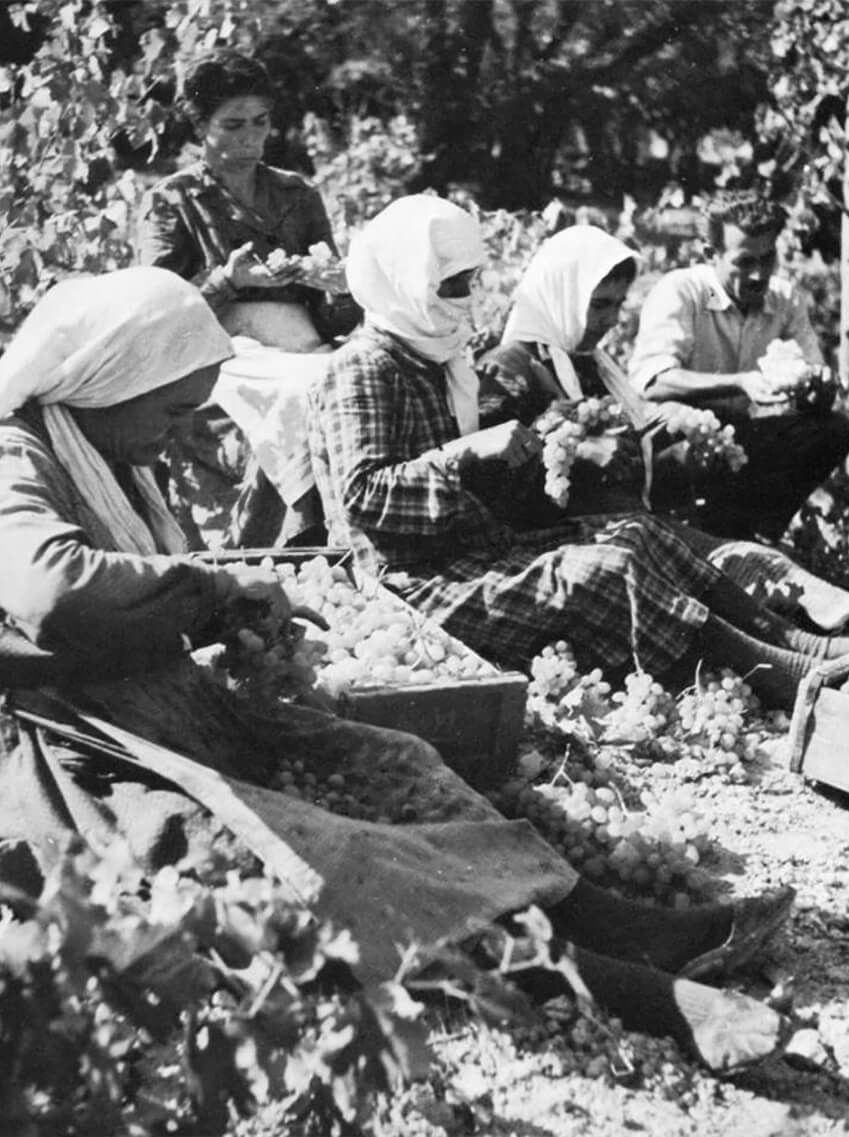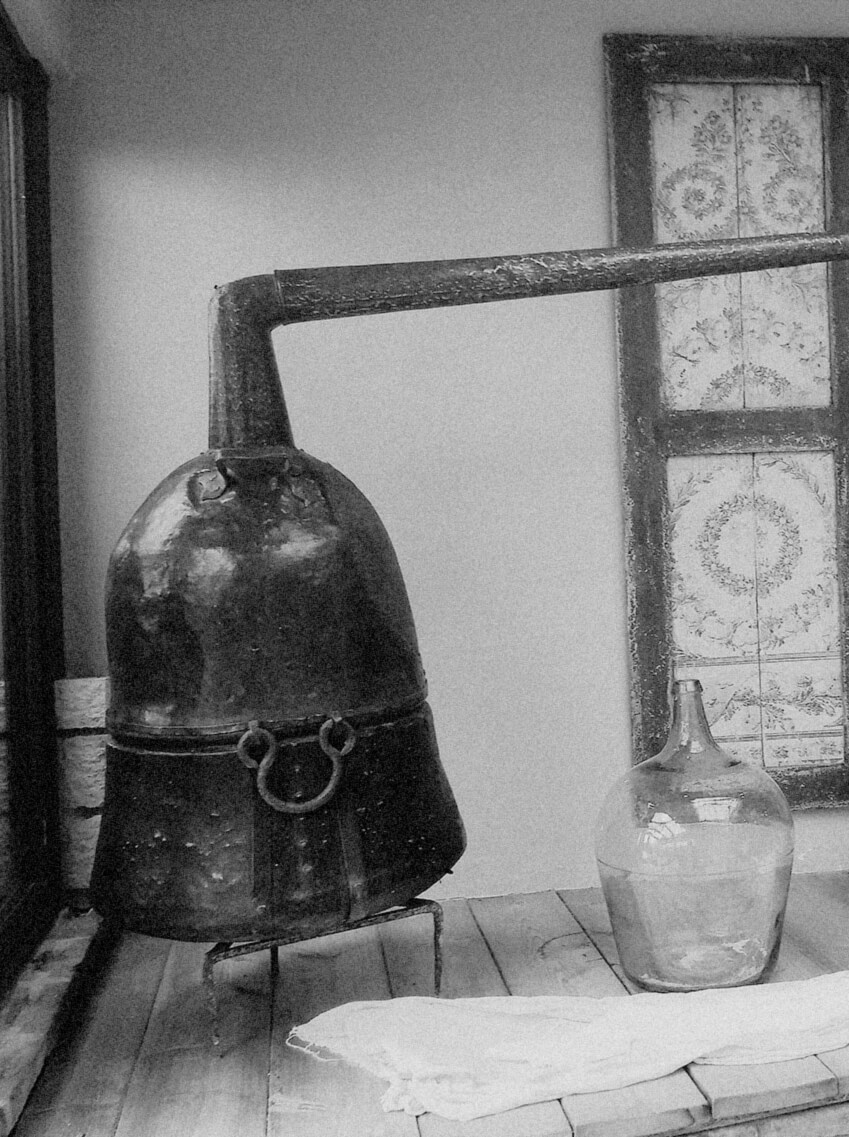Our story
Our family vines have been cultivated for over a century, for the annual domestic production of wine as well as tsipouro (the traditional Greek distillate from the marc of the grapes) in the traditional family still (alempic). Some quantities of the produced tsipouro were coming into wooden barrels (mainly oak) and they were taking on the characteristic color and aroma of the old distillates, long before the legislation for bottling and later for the aging of the tsipouro was applied in Greece.

The history of the vine in our country and place is the history of our culture.
The continuous cultivation of the vine in our places is lost in the depths of time. As in the whole of Greece, we have found vineyards and wine production for thousands of years.
Thessaly has a special tradition of distilling and creating traditional products such as tsipouro.

In our area, on the slopes of the Thessalian Agrafa, because of the autonomy by the Turks under the Treaty of Tamassi in 1525 and the existence of copper deposits, the great tradition of the Archaeologists began in the art of the construction of the cauldrons and in the creation of distillation burrows. Due to their autonomy, wine and wine production were also widely spread. But their inability to dispose of them because of their exclusion in the inaccessible mountains and the absence of roads and access to ports has made the numerous inhabitants distil their wines in order to preserve them, thus developing the art of distillation.
In the following centuries, the artisans, the Agrafiotes, started to descend to the Thessalian cities and migrated to Thessaloniki and Constantinople, where they were most sought after for the creation of distillation cauldrons.

With the liberation from the Ottoman occupation in 1881 in our area, at the foothills and slopes of Agrafa, the vineyards were, together with the cereals, the main agricultural crops. The wine-growing zone of Dafnospilia-Paliouri with a local variety of local Black Moschato is for over a century the main wine-growing region of the prefecture of Karditsa for the production of tsipouro and together with the neighboring zone of Messenikolas and other picturesque villages constitute the historical vineyard of the slopes of Agrafa.
In our dialect, the old Agrafian craftsmen of distillation, “púro”, called the “pore”, the passage of the tube (the bow or the ark) from where the heart of the liquefied aromatic steam dropped. Besides, the word tsipouro, comes from the word “oxypouro” and this, from the words “oxy” (narrow) and “pouro” (pore-passage), as we read in Athonite notes of monks.
Birth & Evolution
2009
After a successful professional and scientific career in the area of wine and spirits, Th. Karathanos returned to his homeland. He started reviving old vineyards, planted young, vinified many varieties of grapes with an emphasis on the old native varieties, and experimented in particular with the aged spirits which is also the subject of his doctoral thesis.
2010
In 2010, with his signature, were created the wines of a very small production with the name Hilia Klimata (means A Thousand Vines), White and Red, and in 2011 the old tsipouro PÚRO. The extremely positive impact it had, inside and outside of Greece, despite the minimum production, gave rise to aging tsipouro in general and a new category of upgraded products was spread.
2015
In 2015 he founded the first artisan (craft, micro) distillery in Greece. It is a small distillery – a distillery with an emphasis on new innovative products inspired by the richness of local wine production and produces high quality and extremely limited production spirits. In 2016 the first production and bottling was made at the new distillery.

